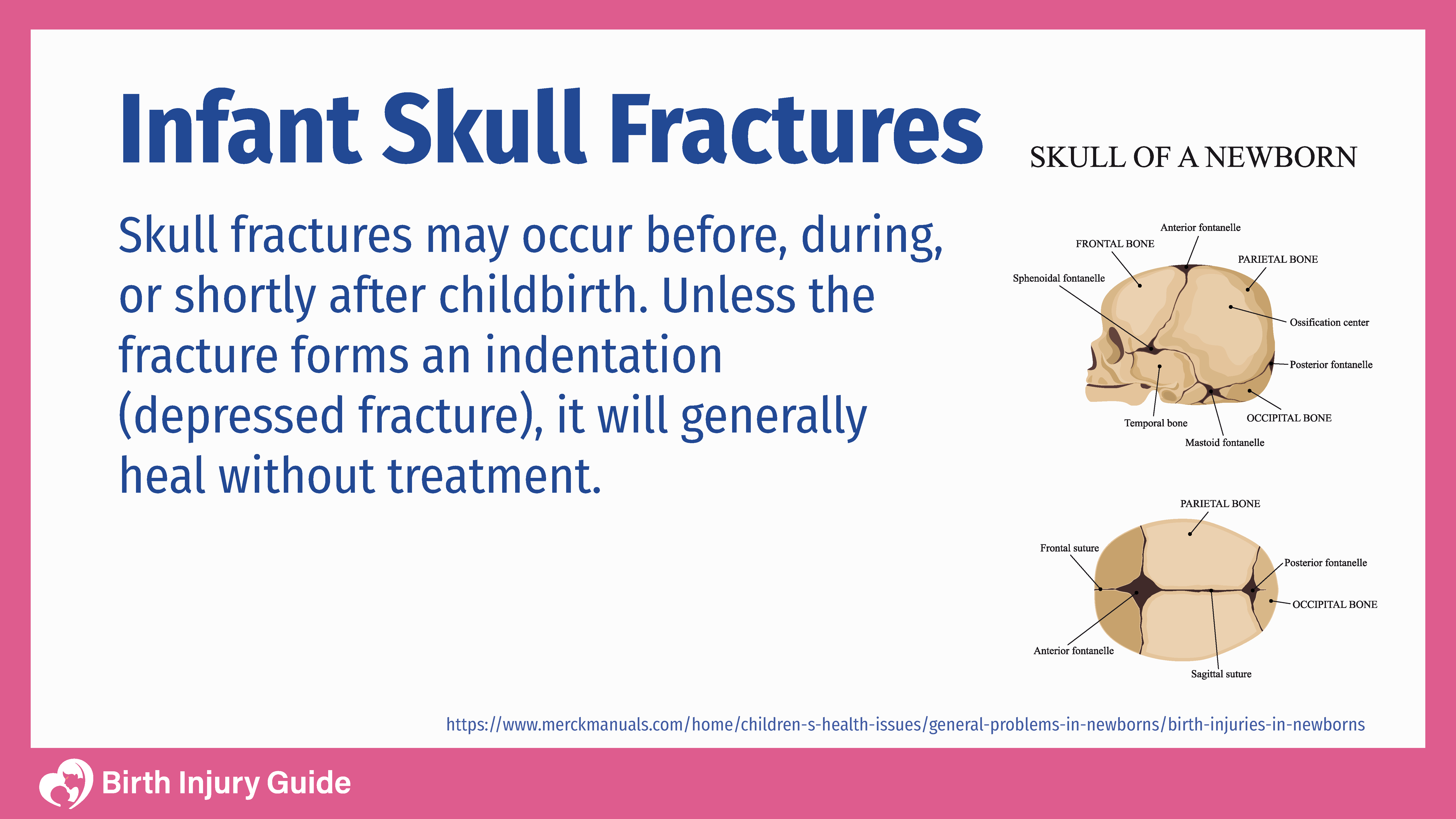
Infant Skull Fractures
Infant skull fractures during birth or any other time, can leave devastating consequences that last a lifetime. Skull fractures range from moderate to severe, but regardless of how minor the injury seems, immediate medical investigation or intervention is imperative.

Causes of Infant Skull Fractures
The pressure on an infant’s skull during delivery may be enough to cause a skull fracture, especially if the mother experiences prolonged contractions. Infant skull fractures can occur during a difficult delivery in which the infant is lodged in the mother’s pelvic area or is too large for normal delivery (macrosomia). In some cases, skull fractures can also be due to the infant being too small for normal delivery.
When an infant becomes stuck during delivery, the risk of oxygen deprivation increases. In an effort to reduce the chances of brain damage, physicians must deliver the infant quickly. Sometimes, this results in the doctor tugging too harshly or being rough in their use of birth-assisting tools. Use of birth-assisting tools is one of the more common causes of infant skull fractures during labor and delivery.
In rare instances, a baby may be dropped shortly after birth, causing not only a skull fracture, but a host of other medical issues.
Can Infant Skull Fractures be Prevented?
A skull fracture is often a preventable birth injury. Doctors can assess risk factors that may cause prolonged labor, shoulder dystocia or other complications. Then, they can take measures to prevent injuries, such as performing a C-section if needed. Failure to assess for risk factors and take appropriate action may be medical negligence.
Start Your FREE Case Review Today
If you or your child is injured as a result of medical negligence, call us to learn more.
Symptoms of Infant Skull Fractures
Symptoms of a skull fracture vary depending on the severity of the injury. Mild fractures often have no obvious symptoms, while more severe fractures may have traumatic symptoms. Some symptoms to watch out for include:
Mild Symptoms:
- Irritability
- Lethargy
- Crying
- Difficulty feeding
- Difficulty sleeping
Moderate Symptoms:
- Swelling
- Lump or depression on the head
- Bruising around the eyes
- Excessive fussiness
- Bleeding from the ears or nose
Severe Symptoms:
- Excessive fussiness
- Unexplained irritability
- Seizures
Treatment for an Infant Skull Fracture
Treatment for a skull fracture depends on the severity of the injury. Sometimes a slight fracture can heal itself and should merely be monitored. In more severe cases, a doctor may have to drain any fluid that builds up in the brain. If the fracture is so severe that the brain has been bruised and is swollen, doctors may decide to remove a piece of the skull to relieve pressure on the brain.
Prognosis for an Infant Skull Fracture
The prognosis for infant skull fractures depends on the severity of the injury and other factors. With timely treatment, the prognosis for mild or moderate fractures is generally favorable. For more severe fractures, or those causing brain injury, the prognosis may differ. Brain damage can lead to a variety of short- and long-term conditions that can impact your child. Brain damage often results in conditions like cerebral palsy, seizures, developmental delays and behavioral problems.
Talk to your child’s healthcare team about how you can help optimize your child’s prognosis depending on his or her injury.



